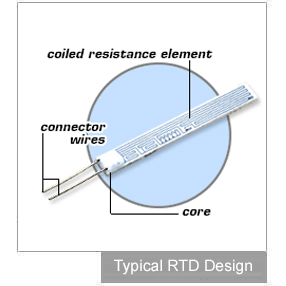A resistance temperature detector rtd is a temperature measurement device that accurately uses resistance to measure temperature.
Rtd temp probe wiring.
The resistance increases as the temperature of the sensor increases.
This construction minimized strain on the wire while maximizing resistance.
Because every pt100 element in the circuit containing the sensing element including the lead wires connectors and the measuring instrument itself will introduce additional resistance into the circuit it s important to be able to.
An rtd resistance temperature detector is a sensor whose resistance changes as its temperature changes.
Difference between 2 wire rtd 3 wire rtd and 4 wire rtd s rtds resistance temperature detectors are offered with 2 3 or 4 lead configuration.
The 5437 2 wire hart temperature transmitter the 5337 2 wire transmitter with hart protocol and the 6337 2 wire hart transmitter can be programmed with these coefficients precisely matching the transmitter to a characterized rtd for exceptional measurement accuracy.
The resistance vs temperature relationship is well known and is repeatable over time.
Learn the differences between 2 wire 3 wire and 4 wire rtd s and which one you should choose for your measurement needs.
It provides full cancellation of spurious effects.
Rtd sensor in 2 wire circuit.
2 wire 3 wire and 4 wire rtd explained.
As rtd elements are fragile they are often housed in protective probes.
Rtd sensor in 2 wire circuit.
It does not produce an output on its.
An rtd is a passive device.
The classical resistance temperature detector rtd construction using platinum was proposed by c h.
Below is a better configuration four wire kelvin connection.
The best configuration for a specific application depends on a number of factors however the sensor configuration must match with transmitter otherwise leadwire resistance cancellation circuitry.
1 convert to 3 wire circuit which will essentially eliminate the ambient temperature effects 2 convert to a 4 wire circuit in this case connection lead resistance effects completely eliminated.
The material has an accurate resistance temperature relationship which is used to provide an indication of temperature.
The rtd wire is a pure material typically platinum nickel or copper.
Cable resistance of up to 15 ω can be handled.
With the 4 wire configuration the instrument will pass a constant current i through.
Rtd circuits work by sending a known amount of current through an rtd sensor and then measuring the voltage drop across that resistor at the given temperature.
The connection lead are subjected to a large temperature change.
He wound a helical coil of platinum on a crossed mica web and mounted the assembly inside a glass tube.

